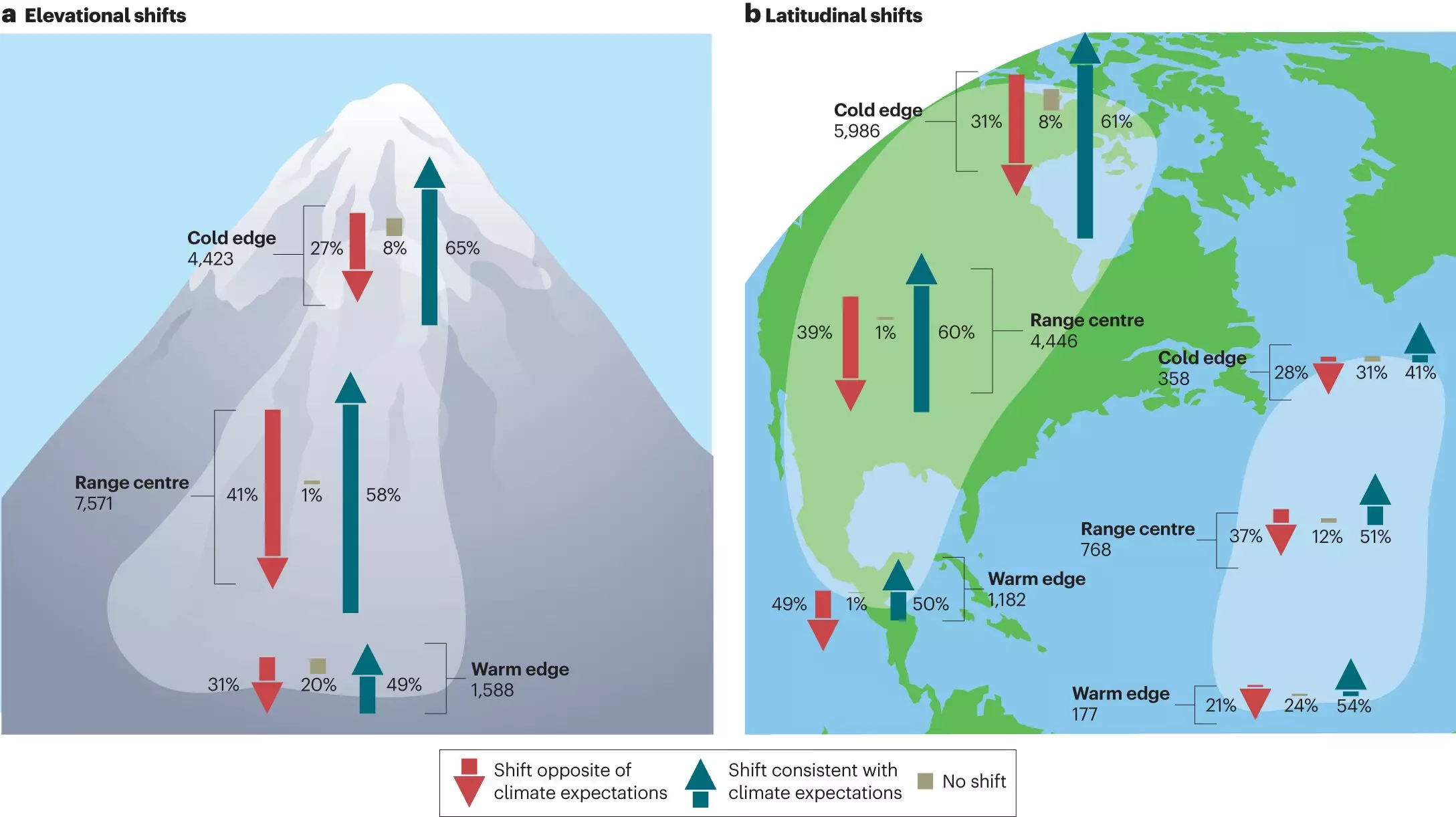The ongoing rise in global temperatures has unleashed a wave of ecological shifts, compelling countless species to adjust their geographic ranges. But the reality of these movements, as recent research reveals, is far more nuanced than the straightforward logic of warming causing straightforward migrations to cooler areas. While it’s tempting to view climate change as the primary engine behind every species’ relocation, this perspective misses the intricate interplay of biological traits, environmental barriers, and ecosystem specifics that dictate whether, how, and where species choose—or are able—to move.
The international study spearheaded by researchers at McGill University sheds new light on these complexities by examining the global patterns of nearly 26,000 species. Using the BioShifts database, the team tracked shifts in habitats and found that although 59% of species followed the expected trend of moving toward cooler locales, a striking 41% defied this pattern. This significant minority either stayed put despite warming or migrated in unexpected directions, signaling that temperature alone is insufficient for predicting species’ range changes.
The Overlooked Variables Influencing Species Migration
Diving deeper, the researchers emphasize that species-specific biological characteristics and landscape features play crucial roles alongside climate effects. For instance, a species’ life cycle—whether it has multiple generations per year or a slow reproductive rate—can affect its ability to respond quickly to environmental pressures. Equally, sensitivity to temperature changes varies widely; some species are highly adaptable biologically, while others are fragile and reluctant. Furthermore, the physical landscape itself matters—a mountain range, urban development, or habitat fragmentation can act as barriers, preventing or redirecting migratory routes.
These insights urge a shift away from one-dimensional climate models toward multi-factor frameworks that account for biology, ecology, and geography in tandem. This holistic approach will better equip conservationists and policy-makers facing the tangible consequences of species migrating into new territories, affecting everything from disease dynamics (such as the spread of malaria or Lyme disease) to economic considerations linked to fisheries and agriculture.
The Perils of Data Gaps and Regional Biases
One of the most sobering revelations of the McGill study is how much uncertainty persists because of data limitations. The current understanding is heavily skewed towards observations from Europe and North America—regions with well-established scientific monitoring infrastructure. This Eurocentric and North American focus means that vast ecosystems, particularly in tropical, arid, and marine environments, are underrepresented.
This geographic bias is problematic because ecosystems that experience seasonal rainfall rather than distinct four-season cycles may respond very differently to climate pressures. Additionally, marine species—with their unique dispersal patterns influenced by ocean currents—are largely absent from existing analyses. The implications are profound: policy and management plans based predominantly on northern hemisphere terrestrial species could be dangerously misplaced when applied to tropical or marine contexts.
Implications for Policy and Conservation Strategies
This emerging complexity demands fresh thinking among environmental planners. Traditional resource management models assumed static ecosystems, a notion now obsolete. Instead, anticipatory strategies must integrate the unpredictability and heterogeneity of range shifts. Conservation efforts, for example, should incorporate a spectrum of scenarios including stalled migrations or unexpected relocations, not just the anticipated movements toward poles or higher elevations.
Additionally, this research highlights the critical need to expand biodiversity monitoring on a global scale. Better, more representative data across diverse habitats and species types will enhance models, sharpening predictions and facilitating adaptable management practices. Without this, efforts to mitigate biodiversity loss risk failure due to oversimplified assumptions.
My Perspective: Embracing Complexity as a Catalyst for Innovation
The mixed picture painted by this study is, in many ways, a call to embrace ecological complexity rather than shy away from it. Climate change is a reality that cannot be distilled into linear cause-and-effect relationships, especially when living organisms with varied lifecycles and behaviors are involved. The challenge for science and policy is to become equally sophisticated in grappling with this complexity.
While the uncertainty might initially seem discouraging, it also inspires innovation in conservation science. We need a paradigm that is flexible, predictive yet adaptive, and that collaborates across disciplines—from climatology and ecology to economics and public health. Recognizing that many species resist or reroute their shifts, rather than blindly following temperature gradients, points us toward tailored, species-specific, and ecosystem-specific interventions.
Ultimately, the research reminds us that climate change’s impact on biodiversity is not a uniform wave washing evenly across the globe. It is an intricate dance of species moving to survival’s rhythm—sometimes obeying the music of temperature rise, other times improvising moves shaped by their unique biological and environmental contexts. The future of biodiversity management lies in our willingness to learn this dance and guide it wisely.


Leave a Reply